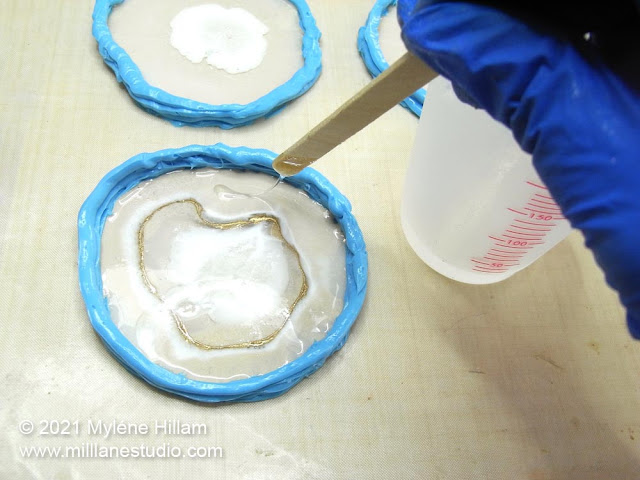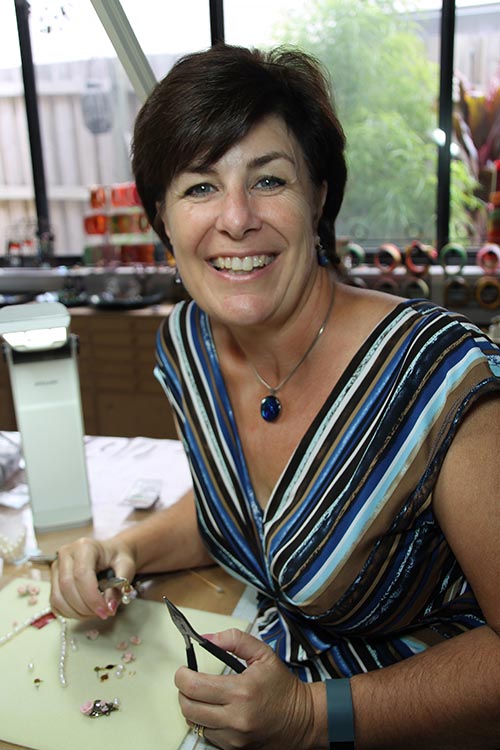The most exciting thing to come out of 2020-2022 is the rise in popularity of resin crafting.
OK, that's a pretty big statement to make and I'm sure you have your own opinion about what the most exciting thing from 2020-22 is.
But there is no doubt that resin is the medium many crafters are choosing to dabble in for the first time during 2020, 2021 and 2022. It's pretty easy to get started: all you need is some epoxy, colourants and moulds.
But there's a whole lot more to resin crafting than mixing, colouring and pouring resin. When you're working with resin, you're working with chemicals so there's an important safety aspect to it too!
So here's my recommendation for the safety precautions you should take BEFORE your start mixing resin.
I've put it all together in a 12-point safety checklist! Keep reading to see how you can download it.
So why all the fuss about resin safety?
Because working safely with resin will reduce the risk of you running into any health issues such as allergies, sensitivity to resin or contact dermatitis.
Those risks might sound scary, but they don't need to be. With commonsense precautions, working with resin is FUN!
Modern resin formulations don't have the unpleasant odour that many of their early predecessors did (except for polyester resin and many UV resin formulations which still stink!).
But don't let that lack of odour deceive you - just because you can't smell it, or it has a pleasant smell, doesn't mean that there are no vapours. You should still take measures to protect your health and that of those around you.
In its cured state, epoxy resin is inert. But in its unmixed and uncured state, resin contains chemicals that some people are allergic to, or will develop a sensitivity to in time. There is no way of telling in advance whether you'll be allergic or not so you must take safety precautions seriously when working with resin.
Here are 12 basic safety precautions to take when working with resin:
Personal Protective Equipment (PPE)
1. Always glove up when working with resin, no matter how experienced you are.
It's easy to get resin on your hands if you pick up a bottle that has drips on the outside or if you accidentally touch your curing resin. Choose nitrile gloves as they provide better chemical protection than latex gloves plus they are stronger.
2. Protect your eyes by wearing goggles or wrap-around safety glasses. If you wear glasses, look for goggles that will fit comfortably over them.
3. Protective clothing: make sure your arms are covered right down to your gloved hands. You can wear disposable sleeve protectors or a long-sleeved shirt with a button-up or elasticised wrist.
Wear old clothes that you wouldn't mind getting resin on because it won't come off fabrics. Contaminated clothing needs to be removed immediately so the resin doesn't seep through the fabric to your skin.
4. You can apply a barrier cream to your hands in addition to wearing nitrile gloves for added protection, just in case a glove tears or splits.
At this point, it might feel like you're a lab technician, wearing your goggles, gloves and a long-sleeved shirt but this is the very minimum PPE to use if you're just doing the occasional resin project.
5. One thing 2020-2022 has taught us is that wearing a mask is important for your health. But medical masks and dust masks do not filter out vapours from resin. If you'll be working with resin extensively, then you should consider even further protection, including a half-mask respirator, like this.
You use this mask in conjunction with replaceable canisters suitable for organic vapours, like these.
This mask/cartridge combination is soft and lightweight and has adjustable straps so that it fits comfortably and firmly against your face, and the filters have a low profile so they don't restrict your vision. They come in 3 sizes: small (6100), medium (6200) and large (6300).
Safety in your Resin Work Area
Apart from your own personal safety, you need to consider safety in your workspace and the health of those around you.
6. You need to work in a well-ventilated area with good airflow.
Work near an open window or external door and position a portable fan so that fresh air flows past you and blows the vapours outside. This will help refresh the air in your work area.
7. Don't eat, drink or smoke whilst working with resin.
If you want to consume anything, take a break. Remove your gloves, leave the room and wash your hands before consuming anything.
8. Keep children and pets away from your resin workspace.
Many resin manufacturers recommend that children under the age of 12 should not work with resin, so it follows that they should also not be around uncured resin.
9. Avoid working with resin during pregnancy as it's not known what effect the chemicals in resin might have on an unborn child.
10. Keep your resin tools and food preparation tools separate.
There are many items used in the kitchen that are also ideal for working with resin, like ice cube trays and silicone cake decorating moulds. But once they've been used with resin, they should never be used for food again.
11. Always wipe down the neck of the bottles and wipe away any resin/hardener that has dripped down the side of the bottles so that you don't accidentally touch it when you're not wearing gloves. I also recommend storing the bottles inside the packaging that the resin came in so even if you have some uncured resin or hardener on the outside of the bottles, your hands won't come into direct contact with it.
12. Once you've finished your resin session, keep your gloves on until you've cleaned up your work area. Then remove them and wash your hands thoroughly with soap and water.
Important Note: If you experience any symptoms such as itchiness or a rash, puffiness, headaches, restricted breathing or any other symptoms similar to those associated with dermatitis or an allergic reaction, even if the symptoms are mild, you should stop working with resin immediately and seek medical attention. It could be a coincidence, but you don't want to take any chances with your health.
Once you've taken care of the safety precautions, you're ready to have some real fun.
- Go and mix your resin - see the trick for mixing resin without bubbles here;
- Colour it - try these alternative colourants you might already have lying around at home; and
- Pour it into moulds - take a look at these awesome tips for your moulds.
Happy Resining!
Subscribe to my email list and learn how to resin like an expert.









